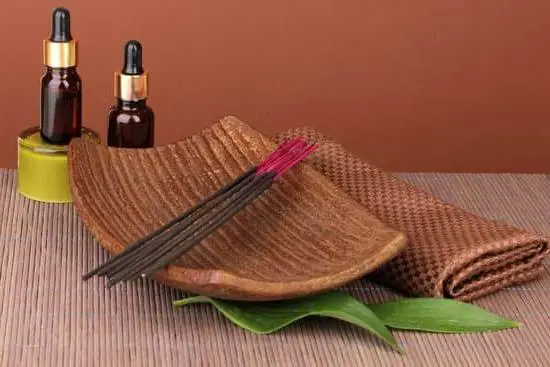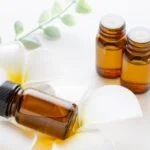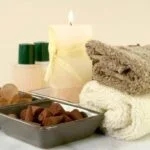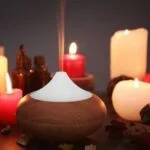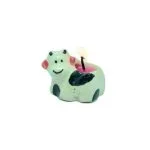Aromatherapy diffusers have gained popularity in recent years for their ability to disperse pleasant scents and create a relaxing ambiance. However, these devices are often questioned for their effectiveness as humidifiers. In this article, we delve into the intriguing question of whether aromatherapy diffusers can double as humidifiers. Understanding this topic is crucial for those seeking to enhance both their indoor air quality and overall well-being.
Maintaining optimal humidity levels indoors is essential for a comfortable living environment. Humidifiers play a vital role in achieving this by adding moisture to the air, which can alleviate symptoms associated with dryness such as dry skin, irritated nasal passages, and even respiratory issues. On the other hand, aromatherapy diffusers are primarily known for dispersing essential oils or fragrance blends into the air, creating an inviting atmosphere that promotes relaxation and calmness.
In this blog post, we aim to explore whether aromatherapy diffusers can effectively serve as makeshift humidifiers. By examining the functionalities of both devices and highlighting their key differences in terms of purpose and mechanism, you will gain clarity on whether using an aromatherapy diffuser can help increase the humidity levels in your home or workspace. Stay tuned to discover the potential benefits and drawbacks of this unconventional method, along with practical tips for maximizing its performance.
As you continue reading, keep in mind that while it may be tempting to repurpose your existing aromatherapy diffuser as a humidifier due to its more widespread availability, it is important to understand the limitations and potential risks involved before doing so. By exploring this topic thoroughly, you will be equipped with valuable knowledge that enables you to make informed decisions when it comes to improving your indoor environment.
So, let’s dive into the world of aromatherapy diffusers and humidifiers and uncover if these two can indeed work harmoniously together.
Understanding Aromatherapy Diffusers
Aromatherapy diffusers are devices that are specifically designed to disperse essential oils into the air, allowing their therapeutic properties to be inhaled and absorbed by the body. These diffusers come in various forms, including ultrasonic diffusers, nebulizing diffusers, heat diffusers, and evaporative diffusers.
Ultrasonic diffusers are one of the most common types of aromatherapy diffusers. They work by using electronic frequencies to create vibrations that break down essential oils into microscopic particles. These particles are then released into the air as a fine mist or vapor. The mist is not hot, making it safe to inhale and enjoy the aroma of the essential oils.
Nebulizing diffusers, on the other hand, do not require water or heat to disperse essential oils. Instead, they use pressurized air to break down the oils into a fine mist, which is then emitted into the air. This method allows for a more concentrated aroma and therapeutic effect.
One of the main benefits of aromatherapy diffusers is their ability to enhance mood and promote relaxation. Different essential oils have specific properties that can help alleviate stress, improve sleep quality, boost energy levels, relieve headaches or migraines, and even strengthen the immune system. By using an aromatherapy diffuser, individuals can experience these benefits in a convenient and enjoyable way.
In addition to improving emotional well-being, aromatherapy diffusers also have potential physical health benefits. Certain essential oils possess antimicrobial properties that can help purify the air by eliminating airborne bacteria and viruses. This can contribute to better respiratory health and reduce symptoms associated with allergies or respiratory conditions such as asthma.
Overall, understanding what aromatherapy diffusers are and how they work is crucial when considering whether they can effectively function as humidifiers. While their primary purpose is not humidity-related like traditional humidifiers, their ability to add moisture to the air can have some humidifying effects. However, it is important to note that aromatherapy diffusers may not provide the same level of humidity control or coverage area as dedicated humidifiers.
Functions of Humidifiers
Humidifiers play a vital role in maintaining optimal humidity levels in indoor spaces, providing several benefits for improved health and comfort. These devices work by adding moisture to the air, increasing the humidity level and preventing dryness. The primary function of humidifiers is to alleviate symptoms caused by dry air, such as dry skin, irritated throat, nasal congestion, and static electricity.
One of the key benefits of using humidifiers is relief from respiratory conditions. Dry air can exacerbate respiratory issues like asthma, allergies, and colds. By moisturizing the air, humidifiers help to soothe irritated airways and reduce symptoms like coughing and wheezing. They also aid in keeping mucous membranes moist, which promotes easier breathing and reduces the risk of infections.
Furthermore, maintaining proper humidity levels with a humidifier can benefit individuals with dry skin or eczema. Dry air tends to strip moisture from the skin, leading to dryness, itching, and flaking. The use of a humidifier adds moisture back into the environment which helps to prevent these skin concerns. Additionally, it can minimize discomfort related to contact lenses or eye irritation caused by low humidity levels.
In order to fully understand whether aromatherapy diffusers can work as humidifiers, it is important to recognize the significant differences between the two devices in terms of their primary function, mechanism, and intended use. While both aromatherapy diffusers and humidifiers add moisture to the air, their main purposes diverge.
| Aromatherapy Diffusers | Humidifiers |
|---|---|
| Aromatherapy diffusers are primarily designed for dispersing essential oils into the air. | Humidifiers are specifically created to increase humidity levels in indoor spaces. |
| They utilize ultrasonic technology, nebulizers, or heat to disperse essential oils as a fine mist. | Humidifiers use a variety of methods such as evaporative, ultrasonic, or steam to add moisture to the air. |
| The purpose is to enhance mood, promote relaxation, and provide therapeutic benefits through inhalation of essential oils. | Humidifiers aim to alleviate dryness-related symptoms, improve respiratory health, and maintain optimal humidity levels for comfort. |
Given the distinct differences in their design and intended use, it is clear that aromatherapy diffusers cannot entirely replace the dedicated functionality of humidifiers. However, there may be some instances where aromatherapy diffusers can provide temporary relief by adding slight moisture to the air. The effectiveness of using aromatherapy diffusers as makeshift humidifiers depends on factors such as the coverage area of the diffuser and the volume of mist output.
It is worth noting that aromatherapy diffusers are generally not designed with humidity control features like humidifiers. Therefore, they may not be efficient at providing consistent and measurable humidity levels required for maintaining optimal indoor conditions. Additionally, relying solely on an aromatherapy diffuser as a humidifier may involve frequent refilling due to its typically smaller water reservoir compared to dedicated humidifiers.
Key Differences
Aromatherapy diffusers and humidifiers may seem similar at first glance, as both devices involve adding moisture to the air. However, it is important to understand that they serve distinct purposes and are designed with different mechanisms and intended uses. By highlighting the key differences between these two types of devices, we can better appreciate their respective benefits and make informed decisions when considering which one to use.
Firstly, let’s discuss the primary function of each device. Aromatherapy diffusers are primarily used for dispersing essential oils into the air for therapeutic purposes. They work by breaking down essential oils into tiny particles that are then released into the surrounding environment in the form of a fine mist or vapor. This allows individuals to enjoy the aromatic benefits of different essential oils, such as relaxation or improved focus.
On the other hand, humidifiers are specifically designed to increase humidity levels in indoor spaces. Maintaining optimal humidity levels is crucial for our health and overall well-being. Humidifiers achieve this by emitting moisture into the air through various mechanisms such as ultrasonic vibrations, evaporative wicks, or steam generation. The added moisture can help alleviate dry skin, congestion, allergies, and other respiratory conditions caused by low humidity.
Another notable difference between aromatherapy diffusers and humidifiers lies in their mechanism of operation. Aromatherapy diffusers typically utilize ultrasonic technology or heat to disperse essential oils into the air as a fine mist. Some diffusers also incorporate LED lights or timers for added ambiance or convenience. On the contrary, humidifiers operate by increasing moisture levels in the air without any involvement of essential oils or fragrances.
Lastly, it is important to consider their intended use. Aromatherapy diffusers are commonly used in settings where individuals desire therapeutic benefits from essential oils, such as homes, spas, yoga studios, or massage parlors. On the other hand, humidifiers are often utilized in environments where maintaining optimal humidity levels is crucial for comfort and health, such as bedrooms, living rooms, offices, or nurseries.
Aromatherapy Diffusers as Humidifiers
Aromatherapy diffusers and humidifiers serve different purposes, but there is a question of whether aromatherapy diffusers can be used as makeshift humidifiers. Aromatherapy diffusers are primarily used for dispersing essential oils into the air to create a pleasant aroma and promote relaxation. On the other hand, humidifiers are designed to add moisture to the air in order to maintain optimal humidity levels for improved health and comfort.
While aromatherapy diffusers may release some moisture into the air as part of their operation, they are not designed specifically for humidifying purposes. The main difference lies in their mechanisms and intended use. Aromatherapy diffusers typically rely on either ultrasonic technology or heat to disperse essential oils, whereas humidifiers use various methods such as evaporation or ultrasonic technology to add moisture.
The effectiveness of using aromatherapy diffusers as humidifiers can vary depending on factors such as the size of the space, the mist output of the diffuser, and the duration of operation. In smaller rooms, a diffuser may temporarily increase humidity levels to some extent. However, it is important to note that aromatherapy diffusers are not designed with a large coverage area or high mist output like dedicated humidifiers.
To examine the effectiveness of aromatherapy diffusers as makeshift humidifiers, one important factor to consider is the water capacity of the diffuser. Most diffusers have smaller water tanks compared to standalone humidifiers, meaning that they may need to be refilled more frequently if used solely for adding moisture to the air.
Additionally, another aspect to consider is whether aromatherapy oils or any potential residues from them could cause damage or clog up the device when used as a makeshift humidifier over an extended period of time. It’s crucial to refer to the manufacturer’s instructions and guidelines when using an aromatherapy diffuser in this way and ensure proper cleaning and maintenance to prevent any issues.
Overall, while aromatherapy diffusers can provide a small boost in humidity levels in smaller spaces, they are not designed or intended to be used as humidifiers. Dedicated humidifiers are specifically engineered for adding moisture to the air and are a more reliable option for maintaining optimal humidity levels in larger areas.
Pros and Cons
Advantages of using aromatherapy diffusers as humidifiers
One of the main advantages of using aromatherapy diffusers as humidifiers is their versatility. Aromatherapy diffusers, when filled with water and essential oils, can release a fine mist into the air that can help increase humidity levels in a room.
This can be particularly beneficial in dry environments or during winter months when indoor heating systems tend to reduce moisture in the air. Additionally, aromatherapy diffusers often come with various mist settings that allow users to adjust the amount of moisture released, giving them control over the humidity level.
Another advantage of using aromatherapy diffusers as humidifiers is their portability. Most aromatherapy diffusers are compact and lightweight, making them easy to move around from room to room.
This means that you can use them as temporary humidifiers in different areas of your home based on your needs. For example, if you find that your bedroom feels dry at night, you can simply place an aromatherapy diffuser on your bedside table and enjoy the benefits of increased humidity while also enjoying the calming effects of essential oils.
Disadvantages of using aromatherapy diffusers as humidifiers
Despite their benefits, there are some drawbacks to using aromatherapy diffusers as makeshift humidifiers. One major limitation is their coverage area. Aromatherapy diffusers are typically designed for small rooms or personal spaces and may not be able to effectively moisturize larger areas like living rooms or open floor plans. If you’re looking to increase humidity levels throughout an entire house or large space, it’s recommended to invest in a dedicated humidifier that is specifically designed for such purposes.
Another disadvantage is the mist output and duration of operation. Aromatherapy diffusers generally produce a minimal amount of mist compared to traditional humidifiers. This means that they may not be as effective in raising humidity levels as quickly or efficiently. Additionally, the water reservoirs of aromatherapy diffusers are typically smaller and need to be refilled more frequently, leading to shorter run times. This constant maintenance can be inconvenient for those who require a continuous and consistent humidification process.
Overall, while using aromatherapy diffusers as humidifiers can offer some benefits in terms of versatility and portability, it’s important to consider their limitations when it comes to coverage area, mist output, and duration of operation. Depending on your specific needs and preferences, you may find that investing in a dedicated humidifier is a better option for maintaining optimal humidity levels in your home or workspace.
Tips for Using Aromatherapy Diffusers as Humidifiers
Select the Right Essential Oils
When using an aromatherapy diffuser as a temporary humidifier, it is important to choose essential oils that have humidifying properties. Look for oils such as lavender, eucalyptus, or peppermint, as these are known to help add moisture to the air. Avoid using oils that may have a drying effect, such as citrus oils or those with high concentrations of alcohol.
Dilute Essential Oils Properly
To ensure effective and safe use of your aromatherapy diffuser as a humidifier, it is crucial to dilute the essential oils properly. Although some diffusers may have guidelines on how much oil to use, it is generally recommended to dilute essential oils with carrier oils or water before using them in a diffuser. This helps prevent any potential irritation or damage to the device.
Use the Diffuser in an Appropriate Space
Consider the size of the room when using an aromatherapy diffuser as a makeshift humidifier. Keep in mind that diffusers are typically designed for smaller spaces and may not provide adequate coverage for larger rooms. For best results, place the diffuser in close proximity to where you are spending most of your time, such as on a bedside table or desk.
Monitor Humidity Levels
It is important to keep track of humidity levels in the room when using an aromatherapy diffuser as a temporary humidifier. While traditional humidifiers often come with built-in humidity sensors and controls, most aromatherapy diffusers do not have this feature. To ensure optimal conditions, consider investing in a separate hygrometer to monitor humidity levels and adjust the usage of your diffuser accordingly.
Clean and Maintain Your Diffuser Regularly
Regular maintenance is essential to keep your aromatherapy diffuser functioning effectively as a humidifier. Clean it according to the manufacturer’s instructions, and be sure to remove any excess oil residue after each use. This helps prevent buildup and ensures the diffuser continues to disperse moisture evenly.
By following these tips, you can enhance the performance of your aromatherapy diffuser when using it as a temporary humidifier. However, it is important to remember that while diffusers can provide some level of humidity, they are not designed specifically for this purpose. For long-term or large-scale humidification needs, it is recommended to invest in a dedicated humidifier for optimal results.
Potential Risks and Considerations
While using aromatherapy diffusers as temporary humidifiers may seem like a convenient and cost-effective solution, it is important to be aware of the potential risks and drawbacks that come with this practice. It’s essential to understand these considerations before deciding to use an aromatherapy diffuser in this way.
- Over-Humidification: One of the main risks of using aromatherapy diffusers as humidifiers is the possibility of over-humidifying a space. Aromatherapy diffusers are not designed to control humidity levels, so there is a higher chance of excessive moisture in the air when used for prolonged periods. Over-humidification can lead to issues such as mold growth, musty odors, and even damage to furniture and electronics.
- Damage to the Device: While aromatherapy diffusers are designed for dispersing essential oils into the air, they may not be equipped to handle extended use with just water or without proper dilution. Prolonged usage as a makeshift humidifier can put excessive strain on the device, leading to malfunction or damage. It’s important to check the manufacturer’s instructions and limitations before using an aromatherapy diffuser in this manner.
- Limited Coverage Area: Aromatherapy diffusers typically have small water tanks and are designed for use within smaller spaces such as bedrooms or offices. Using them as humidifiers for larger rooms or open areas may not provide adequate humidity coverage. This limitation can result in uneven distribution of moisture and make it challenging to maintain optimal humidity levels throughout the entire space.
- Inaccurate Humidity Control: Unlike dedicated humidifiers that come with built-in humidity controls, most aromatherapy diffusers do not have precise mechanisms for regulating and maintaining humidity levels. This lack of control can make it difficult to achieve and maintain the desired humidity level, which is crucial for comfort and health benefits.
When considering using an aromatherapy diffuser as a humidifier, it’s important to weigh these potential risks and drawbacks against the expected benefits. Additionally, always follow the manufacturer’s guidelines and recommendations to minimize any potential damages or adverse effects on both the device and indoor environment.
Conclusion
In conclusion, this blog post has aimed to explore the question of whether aromatherapy diffusers can effectively work as humidifiers. We have discussed and compared the functions and mechanisms of both aromatherapy diffusers and humidifiers, highlighting their unique roles in enhancing indoor comfort and well-being.
While it is possible to use aromatherapy diffusers as makeshift humidifiers, there are significant differences between the two devices that should be taken into consideration. Aromatherapy diffusers primarily focus on dispersing essential oils for aromatherapy purposes, whereas humidifiers are specifically designed to add moisture to the air for optimal humidity levels. The mist output, coverage area, and duration of operation also differ between the two devices.
When using aromatherapy diffusers as temporary humidifiers, it is important to consider certain factors for optimized performance. Some practical suggestions include adding water to the diffuser instead of essential oils, using distilled water to prevent mineral buildup, and placing the diffuser in smaller rooms or close proximity to where you spend most of your time.
However, it is crucial to note that there may be potential risks associated with using aromatherapy diffusers as humidifiers. Over-humidification can lead to excessive moisture accumulation in indoor spaces, which may promote mold growth or cause damage to furniture and electronics. Therefore, it is essential to monitor humidity levels closely and exercise caution when using aromatherapy diffusers for this purpose.
Frequently Asked Questions
Can you use an aroma diffuser as a humidifier?
An aroma diffuser and a humidifier serve different purposes, although they may appear similar in terms of releasing moisture into the air. The primary function of an aroma diffuser is to disperse essential oils into the air to create a pleasant aroma and potentially provide therapeutic benefits. On the other hand, a humidifier is specifically designed to increase the humidity levels in a room or space.
While some aroma diffusers may contribute to a slight increase in humidity, they generally do not have the capacity to effectively humidify a room like a dedicated humidifier would. Therefore, if you require additional moisture in the air, it is recommended to use a proper humidifier rather than relying solely on an aroma diffuser.
How can I make my air humid without a humidifier?
There are several ways you can increase the humidity in your home without using a humidifier. One method is by placing bowls or containers filled with water near heat sources such as radiators or vents. As the water evaporates, it adds moisture to the air. Another option is hanging damp towels or using drying racks indoors, allowing them to release moisture naturally through evaporation.
Additionally, running a hot shower or bath can temporarily raise humidity levels in a bathroom, though this effect quickly dissipates once you finish bathing. Lastly, ensuring proper ventilation while cooking can help retain moisture in the air. Although these methods may not be as efficient as using a dedicated humidifier, they can provide some relief and make your living environment more comfortable.
Can a diffuser be used as a humidifier for baby?
It is generally not recommended to use an ordinary diffuser as a substitute for a dedicated humidifier for babies or infants. Babies have delicate respiratory systems that are more sensitive to changes in humidity levels compared to adults. A baby’s room should ideally maintain an optimal level of humidity between 40% and 60% for their comfort and health.
While certain types of diffusers may add some moisture to the air, they are not specifically designed for regulating humidity levels like quality humidifiers are. Additionally, using essential oils or fragrances in a diffuser may not be suitable for babies, as they can potentially cause respiratory irritations or allergies. Therefore, it is advisable to invest in a humidifier specifically designed for baby rooms to ensure proper and safe humidity levels are maintained.

Are you looking for a natural way to improve your health and wellbeing?
If so, aromatherapy may be the answer for you.

